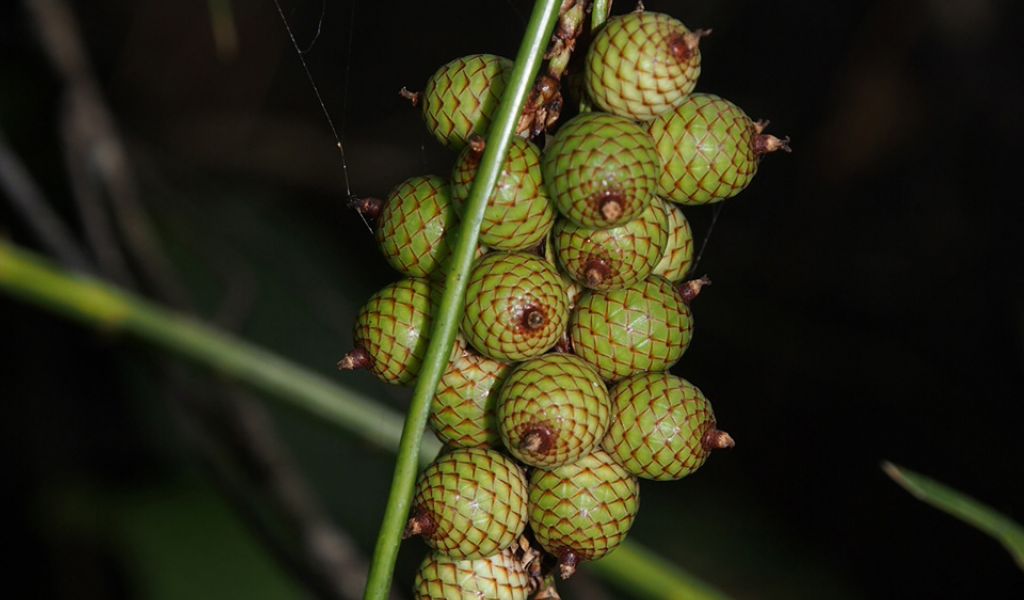ຫວາຍແຍ້ / Lizard Rattan
APA 6th ed. ຫວາຍແຍ້ / Lizard Rattan. (2019, October 18). Retrieved from https://www.phakhaolao.la/kb/0000028
MLA 8th ed. ຫວາຍແຍ້ / Lizard Rattan. Pha Khao Lao, 18 October 2019, https://www.phakhaolao.la/kb/0000028.
Chicago 17th ed. Pha Khao Lao. 2019. "ຫວາຍແຍ້ / Lizard Rattan." Published October 18, 2019. https://www.phakhaolao.la/kb/0000028.

Calamus heliotropium Buch.-Ham. ex Kunth
Palmijuncus tenuis (Roxb.) Kuntze
Thai: wai khom
Vietnamese: meuy daang
A clustering rattan with stems up to 20 m long and 0.8 cm-1.6 cm in diameter. Leaf sheaths are 1 cm-2.5 cm diameter, green, and often striped white when freshly emerging. The needle-like spines are green with a black tip and 0.5 cm-2 cm long. The base of the spine is bent, instead of straight as it is on all other species. It has a tiny, dry ocrea with no spines or bristles and leaves 0.6 m-1 m long. Leaflets are regular with a petiole 8 cm-15 cm long. The inflorescence is 1.5 m-2.5 m long, plus a flagellum and a tubular perianth. The 1.4 cm x 0.8 cm fruit, has white or pale yellow scales, and slightly ruminate seeds. Wai nyeh grows in shrubs, often in areas which flood at altitudes of 200-300 m. It occurs everywhere in Laos, and in northeast and northern Thailand, northern Vietnam and northern Cambodia. It can also survive, localised, in scrub. Heavily used around Vientiane.
Wai nyeh is processed for export in Thoulakom and Saythanee districts for both canes and shoots. Locally a single bitter rattan shoot is sold for $0.05-$0.07, or $0.3-$0.5 per bundle. Dry shoots are worth $4-$5 per kg. Factories or middlemen buy canes for $0.3-$0.5 per kg. 5 m stems of 20 mm diameter are sold for $1.1 and 10 mm-diameter stems for $5 per kg. Wai nyeh is easy to propagate and since 1994 has been widely cultivated for in Laos its shoots. In 2005 it was planted on 188 ha. It shows fast growth in plantations compared to other rattan species and on fertile soils harvesting of shoots is possible after seven months. The fruit has a good taste and is also traded.
